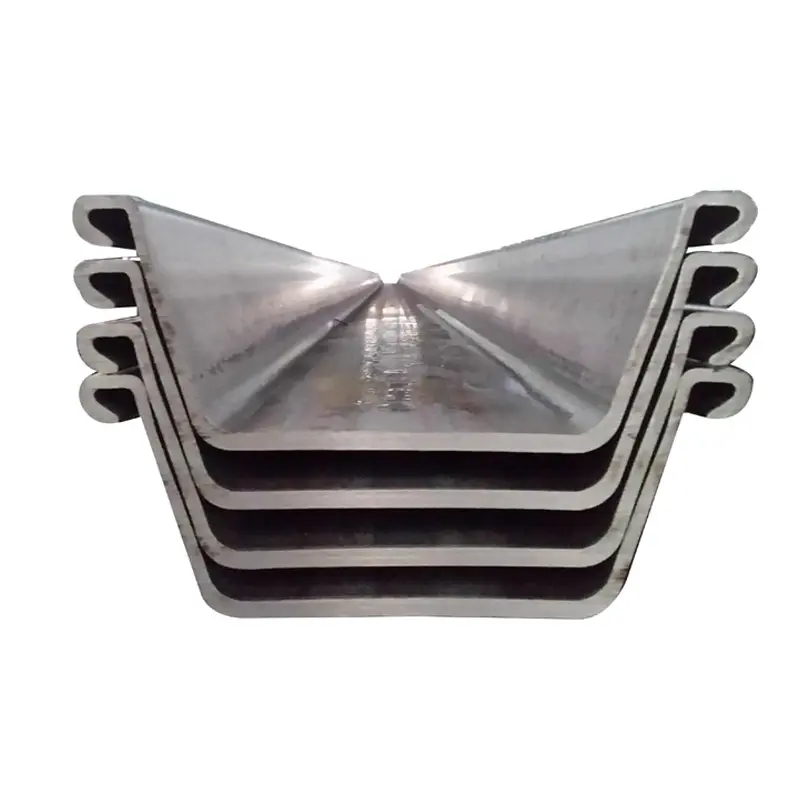Bridge construction steel sheet pile serves as a vital component in foundation works, abutment retaining walls, and river crossing supports, ensuring stable and durable structures capable of withstanding dynamic traffic loads and hydraulic forces. These sheet piles are selected for their high tensile strength, fatigue resistance, and ability to form watertight barriers in riverbeds or coastal bridge sites. Material choices often include high quality carbon steel grades like Q345D or ASTM A709 Grade 50, which meet stringent requirements for impact resistance at low temperatures, crucial for bridges in cold climates. The cross sectional design typically features deep U shaped or Z shaped profiles with reinforced interlocks to resist cyclic loading from traffic vibrations and seasonal thermal expansion/contraction. Manufacturing processes incorporate heat treatment to enhance fatigue properties, with non destructive testing for internal defects using ultrasonic waves to ensure structural integrity. In bridge projects, sheet piles are used to create cofferdams for underwater foundation construction, allowing dry working conditions for pile caps and pier installations. Installation near water bodies requires precise alignment to avoid disrupting river flow, often using GPS guided piling rigs for accuracy. Engineering analysis includes dynamic load testing to simulate traffic induced vibrations and finite element modeling of soil pile interaction under cyclic loading. Corrosion protection is critical for bridge sheet piles in marine or de icing salt environments, with multi layer coating systems (zinc rich primer + polyurethane topcoat) and cathodic protection for submerged sections. Compliance with international standards such as AASHTO LRFD and Eurocode 3 ensures that design parameters account for live loads, impact factors, and seismic forces, meeting safety margins for public infrastructure. The reusability of steel sheet piles in bridge construction reduces waste and costs for temporary works, while their recyclability at end of life supports sustainable construction practices. Ongoing developments focus on integrating smart sensors into bridge sheet piles to monitor strain, corrosion, and settlement in real time, enabling predictive maintenance and enhancing the longevity of critical transportation infrastructure.


